The Miami Science Museum Is Showing Visitors How Climate Change Works
Credit to Author: Rose Marie Cromwell| Date: Mon, 14 Aug 2017 11:00:00 +0000

On a recent summer day at the Phillip and Patricia Frost Science Museum in Miami, which is the only one of its kind in the city, I witnessed multiple summer camp groups yell with glee and excitement when first seeing the many diverse exhibits. The museum is fully bilingual, with exhibits in English and Spanish, and has, in the few short months since it opened, become a destination for locals and tourists. It’s both a place to observe the wonders of science but also serves an important role in helping people understand how climate change and specific threats to the ecosystem affect Florida.
The museum features flora and fauna from the Miami area, placing an emphasis on local conservation. The science museum has had a few different locations over the years. This one, located in the city’s downtown, was designed by the famed Grimshaw architectural firm. Many of exhibits geared toward young kids employ virtual reality aspects. Just as engaging are the wildlife exhibits, where visitors can touch stingrays and pick up hermit crabs.
Florida faces such diverse environmental threats, ranging from industrial contamination from agricultural runoff, to sea level rise due to climate change. Curators here see education as part of their mission, and say it’s important that young people engage with the natural world.
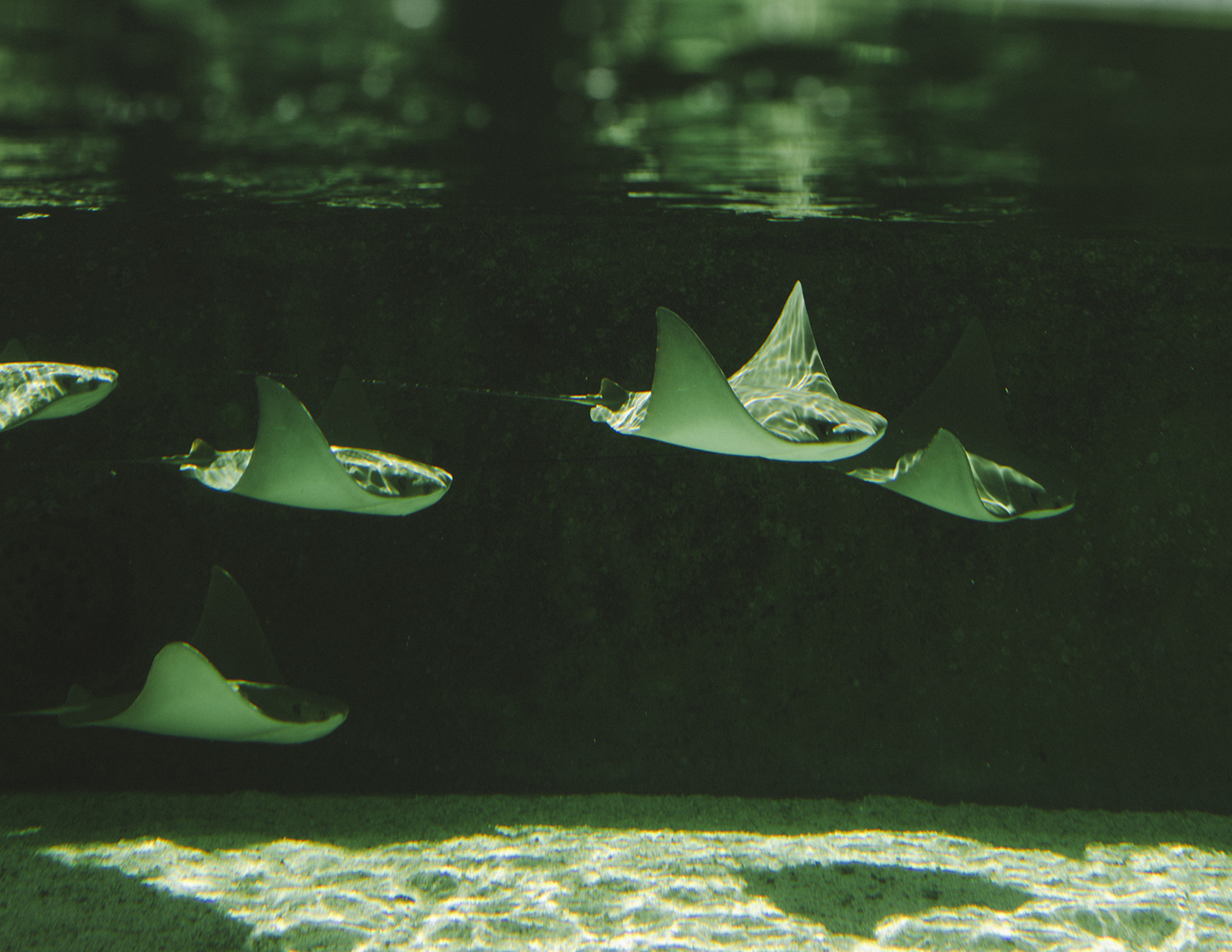
Stingrays (devil rays) swim through the aquarium. At certain times of day, visitors are allowed touch the tops of these rays.
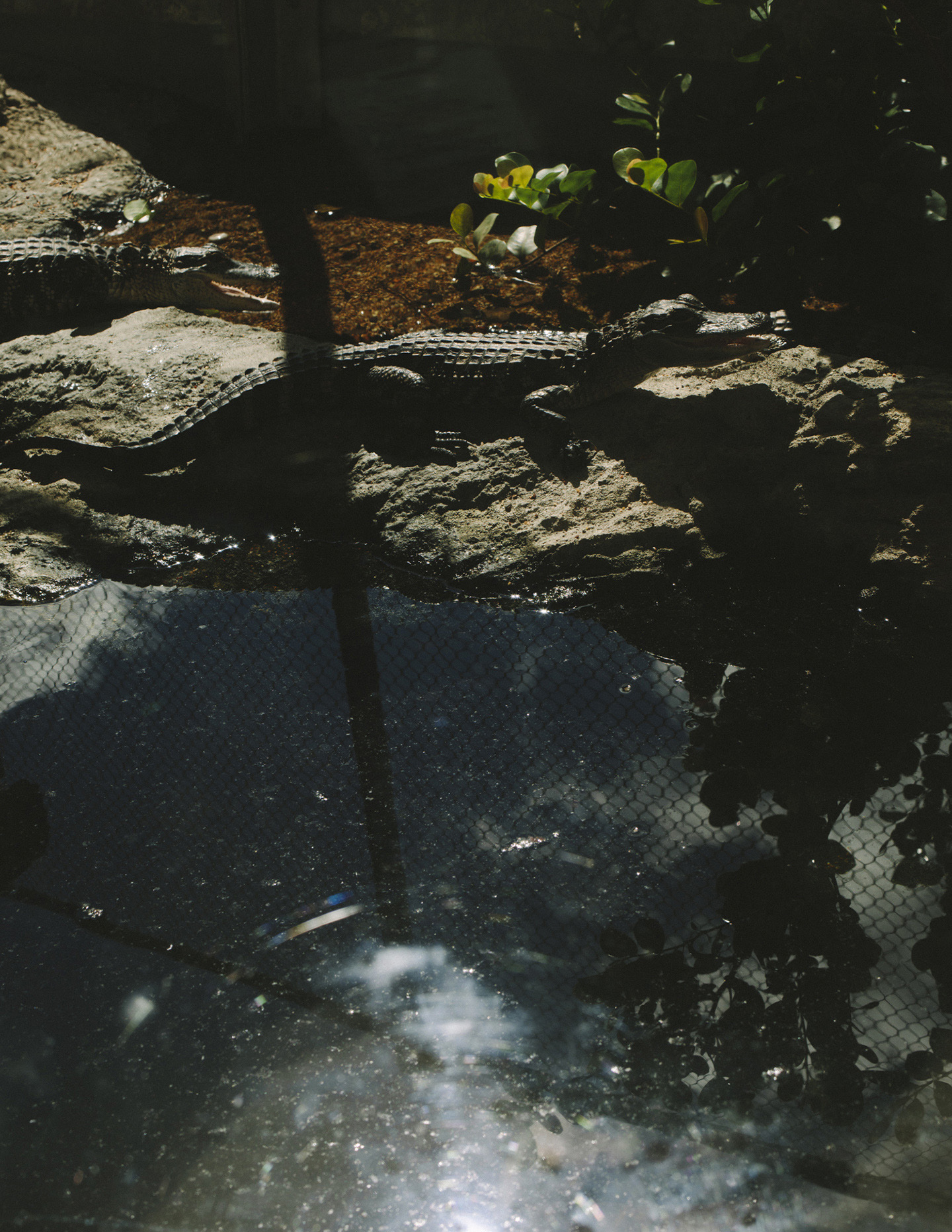
A young alligator sun bathes in a terrestrial tank on the open air.
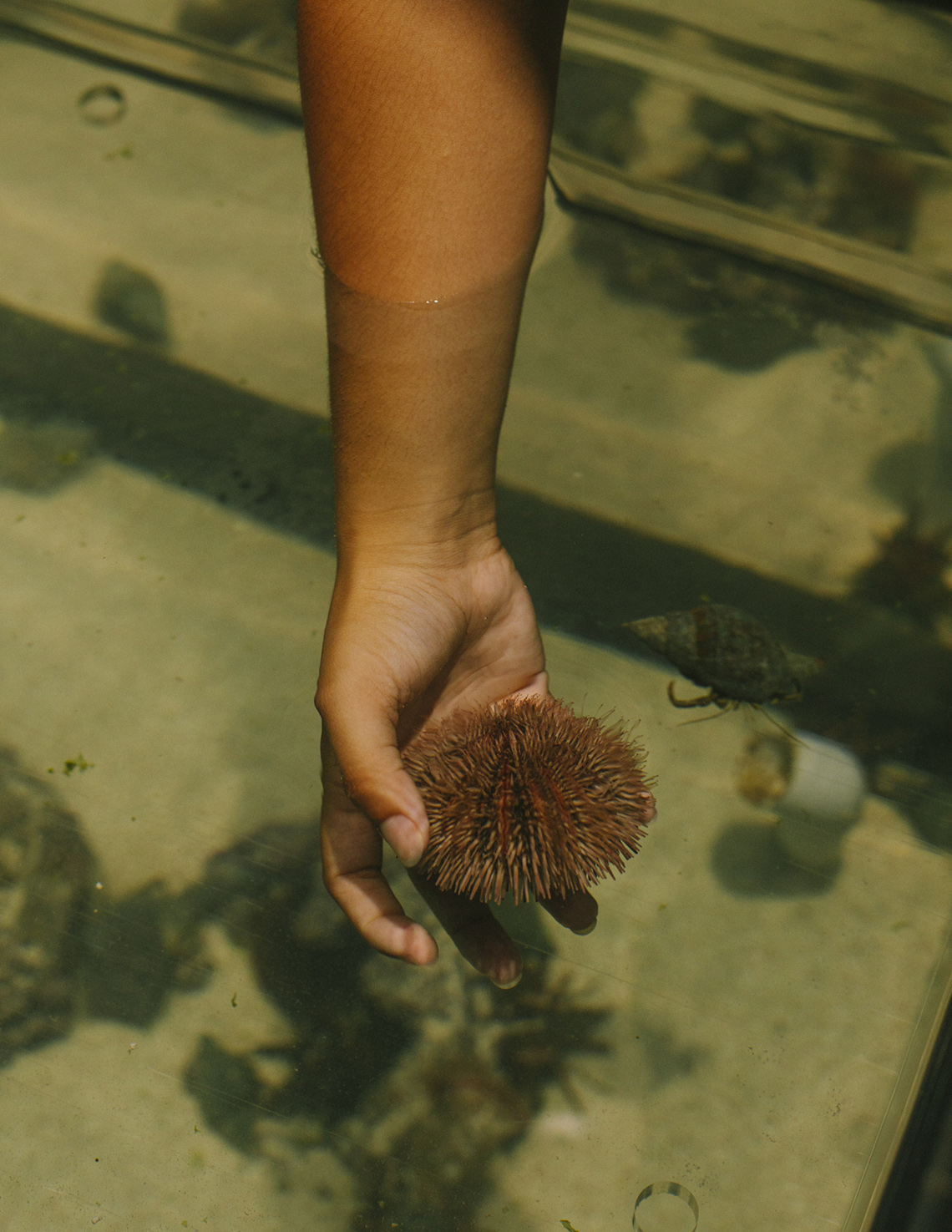
A young visitor holds a sea urchin in another touching tank at the aquarium.
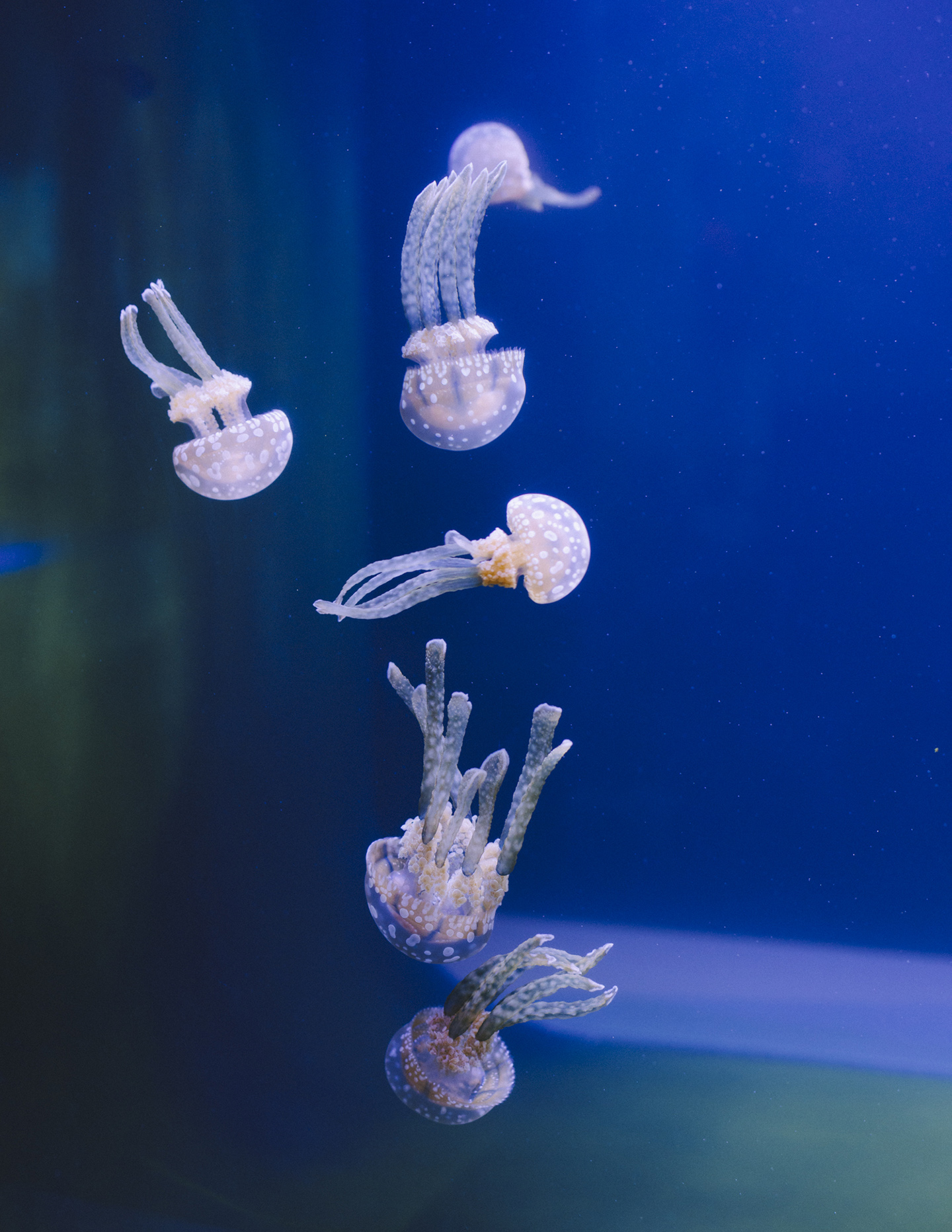
One of multiple jellyfish tanks, in the deep water section of the aquarium.
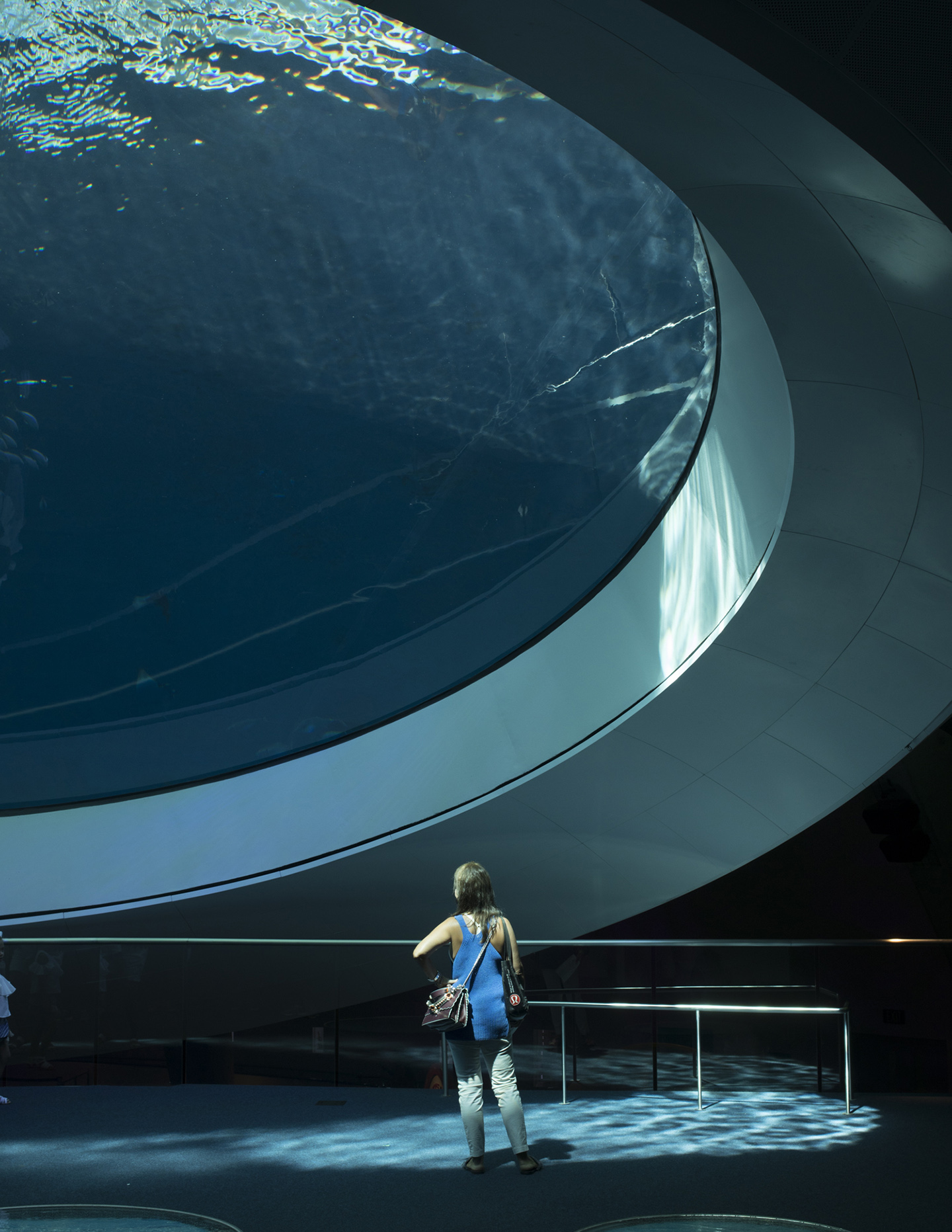
A visitor marvels at the museum’s one-of-a-kind, 31-foot-wide oculus lens (specially made in Italy from poured acrylic for maximum clarity), where tuna and sharks cruise overhead.
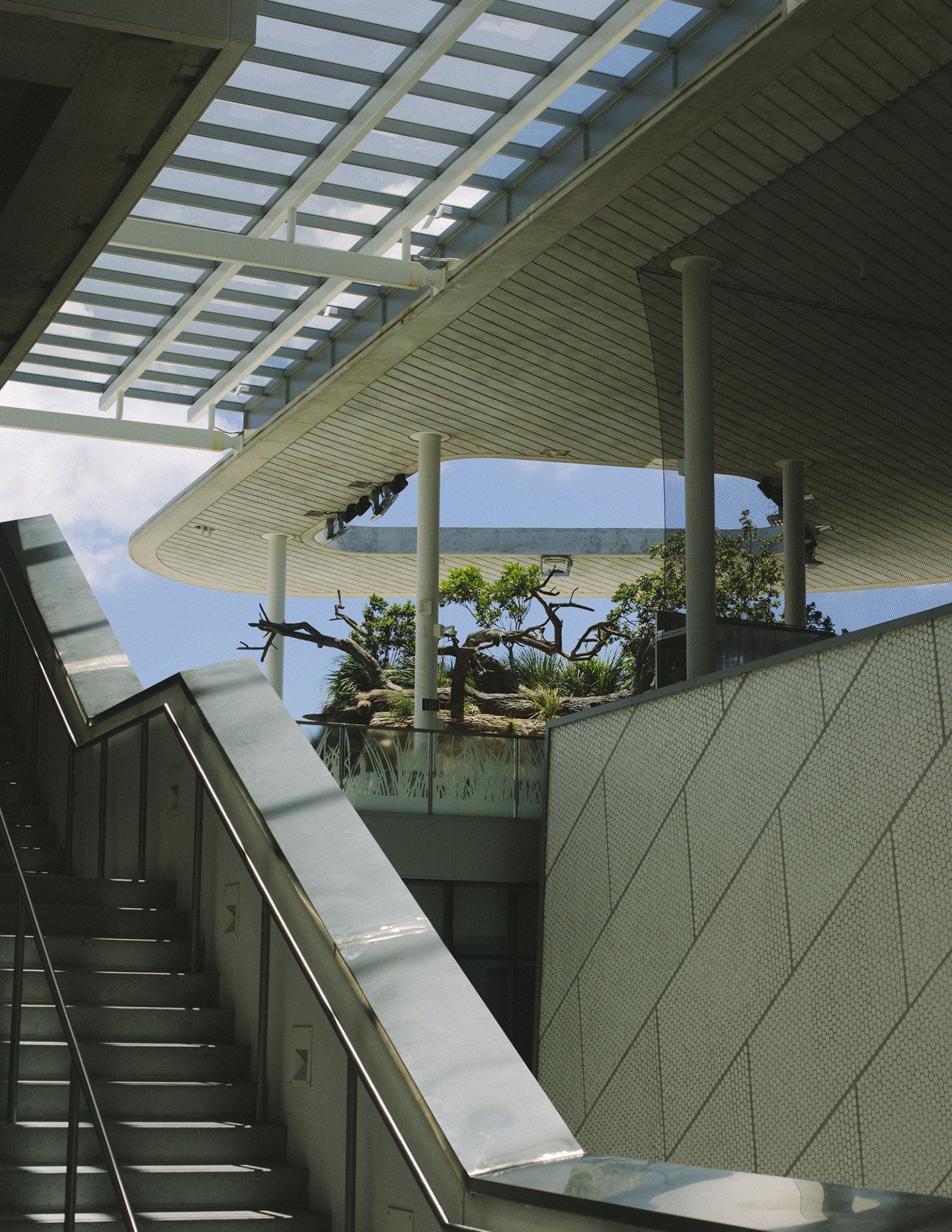
A view of the rooftop terrestrial area.